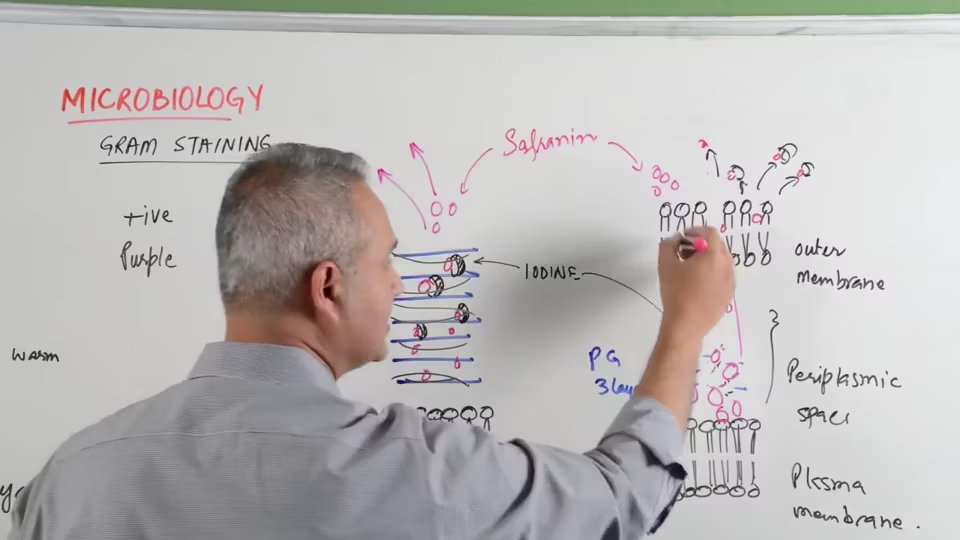
- Put bacteria on plate (if from another plate then dilute agar first);
- Warm the plate to fix bacteria;
- Add gram stain; 20-30 seconds; wash it;
- Add iodine (mordant)
- Add drops of alcohol, to wash out the gram negative bacteria’s color – 20 – 40 seconds;
- Put safranin (counter stain) 20-40 seconds.
Watch DrBeen video explaining these points
https://members.drbeen.com/library/gram-staining/SkUhjG0unx-?topic=Microbiology&subTopic=General
What Happens?
- Gram positive (+ive) bacteria turns purple
- Gram negative(-ive) bacteria turns red
Go to TC 2:57 in the video for illustration of how it happens:
- Covering the Gram +ive plasma membrane (phospholipid bi-layer), there are up to 60 peptidoglycan (PG) layers.
- The gram -ive plasma layer is covered by up to three PG layers and an outer membrane containing lipopolysaccharides.
- Beta-Lactamase is the most important factor in the periplasmic space, enzymes that can break down penicillins.
What happens to the gram stain?
- The small molecules of dye get trapped in the PG layer of gram +ive bacteria and in both the outer membrane and the PG layers of the gram -ive bacteria.
- At this stage both gram +ive and gram -ive look purple under the microscope.
- When iodine (+) is added, it attaches to the molecules of dye (-) and creates a bigger molecule, which gets trapped in the PG layers. Color does not change.
- When alcohol is added it dissolves the lipid portion and dehydrates the cells.
- In the gram +ive cells the water is pulled out by the alcohol and the 60 layers are compressed, trapping the molecules of dye, keeping the purple color.
- In the gram -ive cells, the alcohol dissolves the more abundant lipids, and the three PG layers are too weak to trap the dye molecules so they escape, making the cells colorless.
NB: Using too much alcohol on the gram +ive cells will eventually break down the PG layers allowing the dye to escape so you have to be careful. - The final step is to add safranin, a counterstain, that will turn the colorless gram -ive cells red, but will not be absorbed by the compressed gram +ive cells which stay purple.
And that is how gram staining works!

